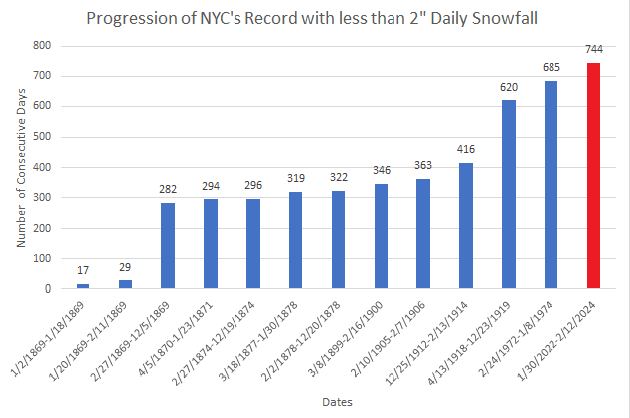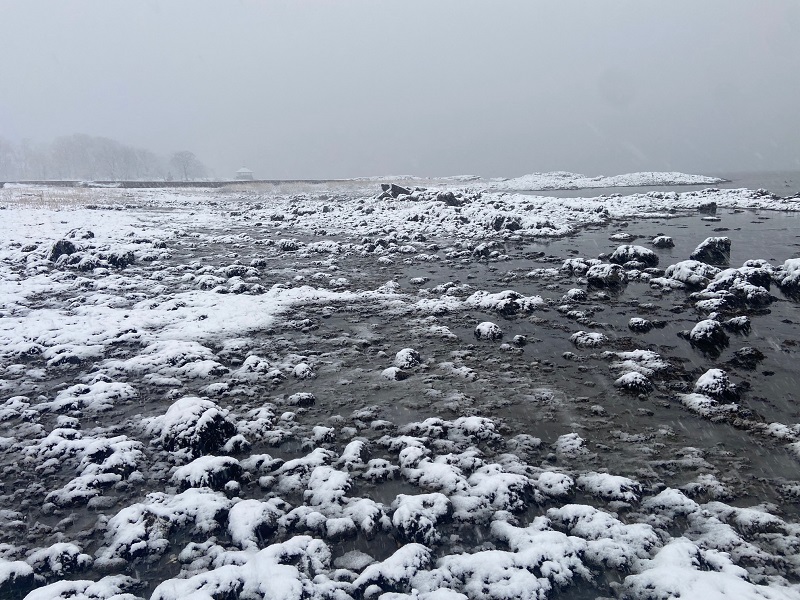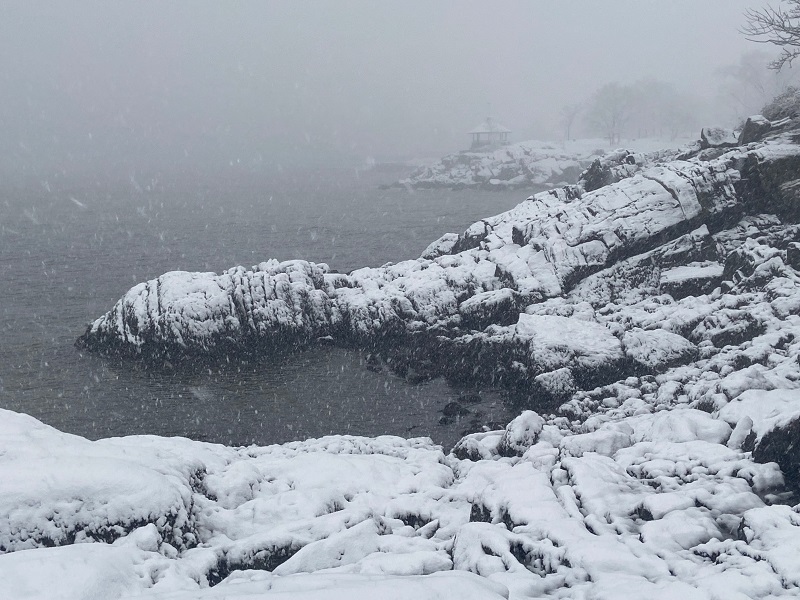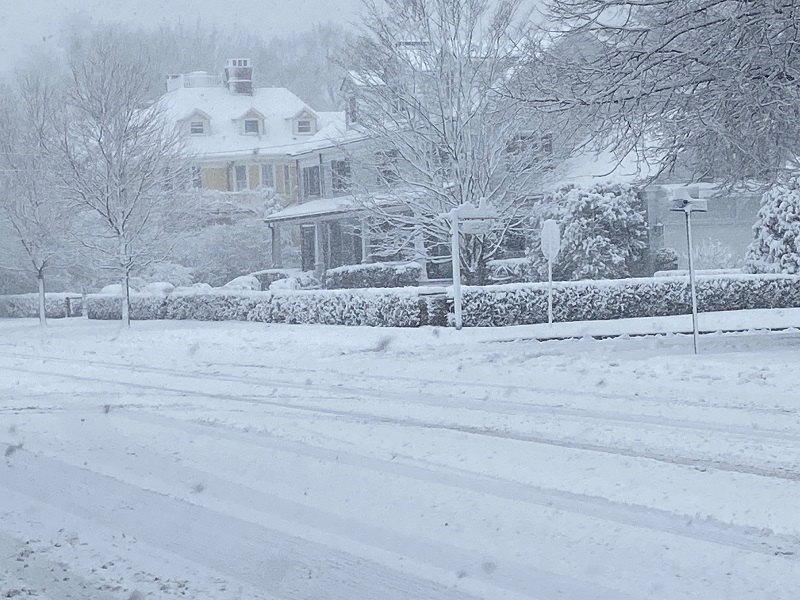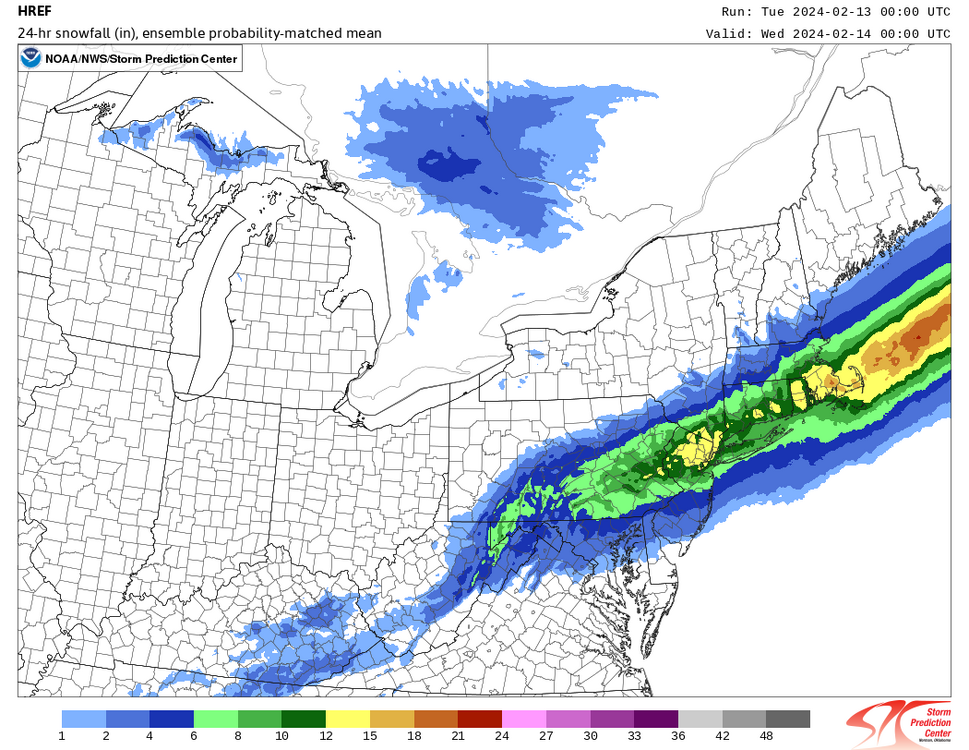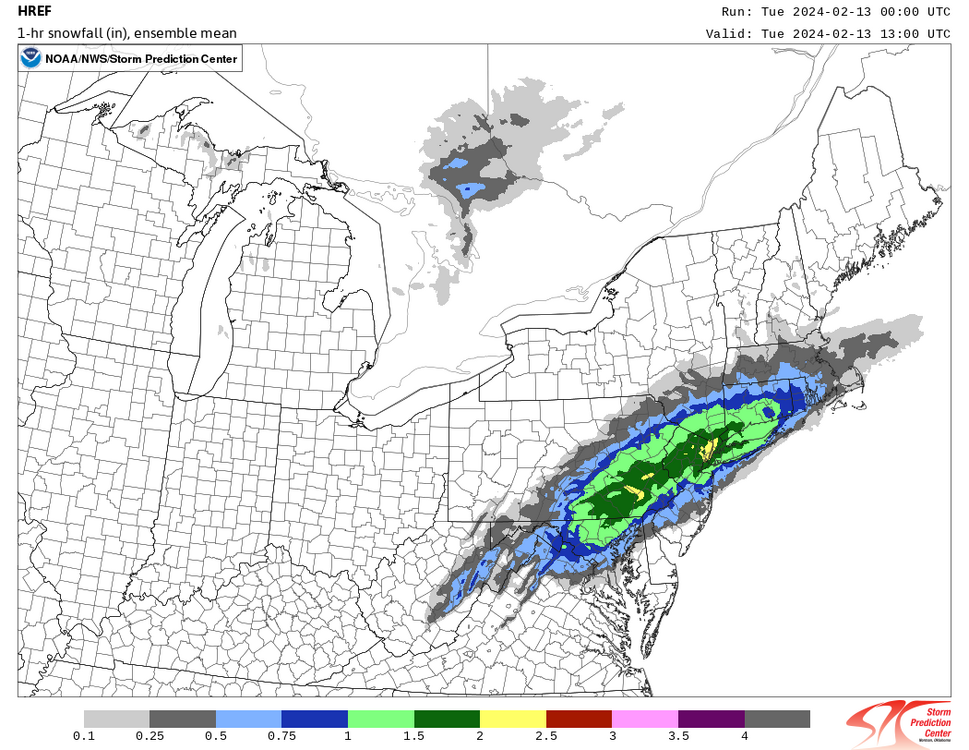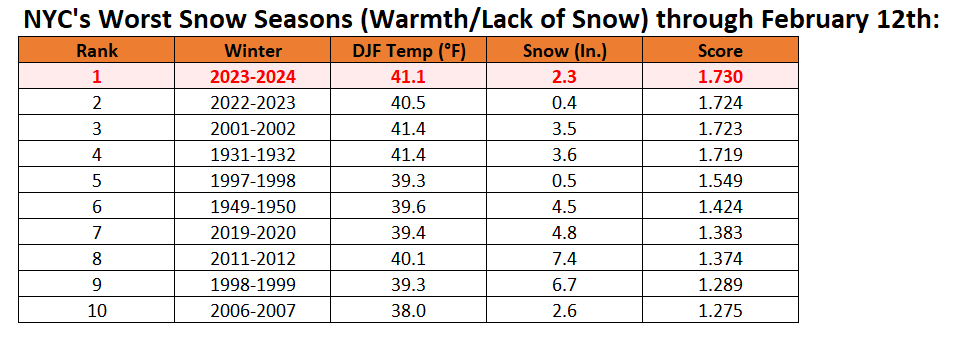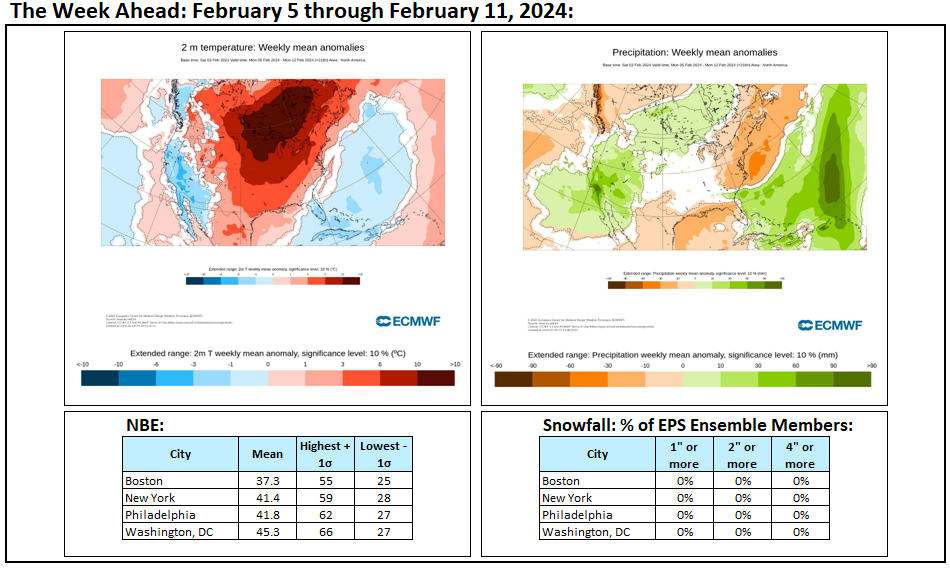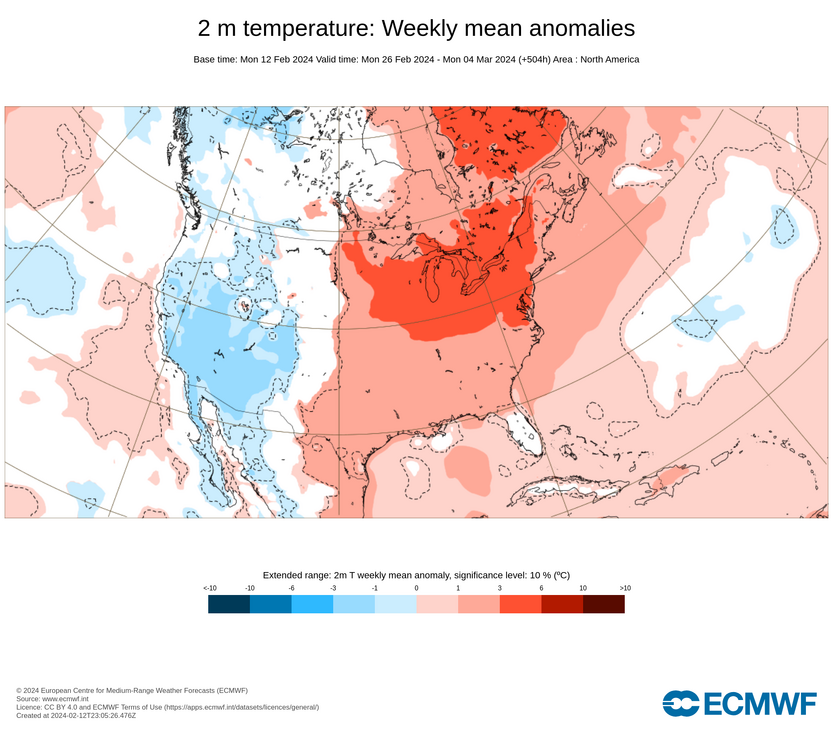The evolution toward a sustained colder pattern will likely follow a storm that will impact the region mainly late tonight into tomorrow afternoon. This will not be an especially cold pattern, but it will be noticeably colder than the pattern that defined the first 10 days of the month.
Rain will change to wet snow in Newark and New York City late tonight or early tomorrow morning. The snow could fall moderately to heavily at times. New York City, Newark, and much of Long Island could pick up 3"-6" of heavy wet snow in a December 25, 2002 rain-to-heavy wet snow scenario. 5"-10" is likely in areas just outside of New York City and Newark. Snowfall amounts could fall sharply from the northern Hudson Valley northward. It is possible that this storm could ultimately become the New York City area's biggest snowstorm of the entire winter.
Temperatures will likely remain above freezing throughout most or all of the storm in New York City and adjacent areas holding down ratios and snowfall amounts. The highest daily snowfall with a low temperature of 32° or above in New York City was 5.5" that fell on April 2, 2018.
Single-digit cold is unlikely in New York City following the pattern change. During February, cases with warm ENSO Region 1+2 anomalies see such lows at 55% of frequency as cold ENSO Region 1+2 cases during El Niño winters. During the second half of February, just 17% of cases with a PDO- saw single-digit cold during El Niño winters. January saw a strongly negative PDO.
The ENSO Region 1+2 anomaly was +1.2°C and the Region 3.4 anomaly was +1.7°C for the week centered around February 7. For the past six weeks, the ENSO Region 1+2 anomaly has averaged +0.93°C and the ENSO Region 3.4 anomaly has averaged +1.62°C. A basinwide El Niño event is ongoing. The ongoing El Niño event will continue to fade through much of February.
The SOI was -37.51 today.
The preliminary Arctic Oscillation (AO) was -1.087 today.
On February 10 the MJO was in Phase 7 at an amplitude of 1.957 (RMM). The February 9-adjusted amplitude was 1.671 (RMM).
Based on sensitivity analysis applied to the latest guidance, there is an implied 75% probability that New York City will have a warmer than normal February (1991-2020 normal). February will likely finish with a mean temperature near 37.9° (2.0° above normal).
Winter 2023-2024 is on course to finish with a seasonal mean temperature of 39.5°-40.3°. That would rank the current winter among the ten warmest on record in New York City. It would also mark the second time when two consecutive winters have ranked among the top ten in terms of warmth. Winters 2015-2016 and 2016-2017 are currently the only two such winters to rank among the ten warmest on record. Should Winter 2023-2024 finish with a mean temperature of 40.0° or above, that would be the first time on record that New York City has seen two consecutive winters with such warmth.





